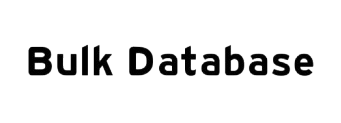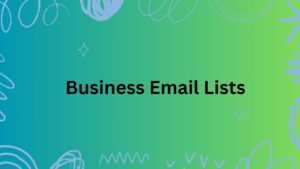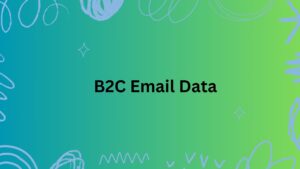Sending mass emails does not constitute effective marketing. Segmentation is the means through which one can render the content personalized and relevant to subscribers. Dividing lists of emails into much smaller and highly targeted groups will enhance engagement, improve click-through rates, and boost conversions.
Understanding Email List Segmentation
In simple terms, it is a way to break down your subscriber lists into smaller-sized segments of contacts featuring some kinds of similarities. It is useful Germany Educational Industry Email List in customizing messages to fit the different unique needs and interests of each segment.
Key Segmentation Criteria
Demographics: Age, sex, location, income level, and occupation.
Interests: Hobbies, preferences, and passions.
Behavior: Purchase history, website activity, and engagement with content.
Engagement: open rates, click-through rates, and conversion rates.
Benefits of Email List Segmentation
Better Engagements: Subscribers are most likely to get themselves engaged with the content relevant to their interests.
More Click-Throughs: Emails resulting from targeting were noted to have improved click-through rates. This leads to many more website visits and conversions.
Higher Conversion Rates: Personalized messages may also encourage subscribers to take some desired action, like making a purchase or even subscribing to the newsletter.
Improved Customer Relationships: The subscribers receive meaningful and relevant information through the process of segmentation, which helps in building a better relationship with the subscribers.
How to Segment
Basic Segmentation: According to new subscribers, current customers, or cold subscribers
Geographic Segmentation: Location-based emails according to city, state, or country
Demographic Segmentation: According India Email Address to age, , income level, or profession.
Behavioral Segmentation: It is segmentation about the past behavior of subscribers like purchase history or website activity. Interest-Based Segmentation: TARGETING subscribers based on their interests or preferences.
E-mail List Segmentation Tools
Email Marketing Platforms: Most of the Email Marketing Platforms have features of segmentation.
CRM Software: CRM software can be utilized to store and segment a customer database.
Data Analytics Tools: Tools like Google Analytics will let you know the behavioral aspects of subscribers and help you to create more focused lists.
Tips to Effectively Segment
Start Small: Begin with only a few criteria for segmentation and expand when you can gather enough data.
Do A/B Testing: Run different segmentation tests to see what works best with your audience.
Keep Your Lists Fresh:
Refresh your segmentation criteria periodically to ensure accurate and relevant lists.
Email messages more personalized and interesting to your prospects: By segmenting data, you will be able to send emails that are more interesting and personal to them.
In effective segmentation of your email list lies much better results out of your marketing. Again, recall that successful email marketing’s pivotal strategy is to provide value and relevance for subscribers.



